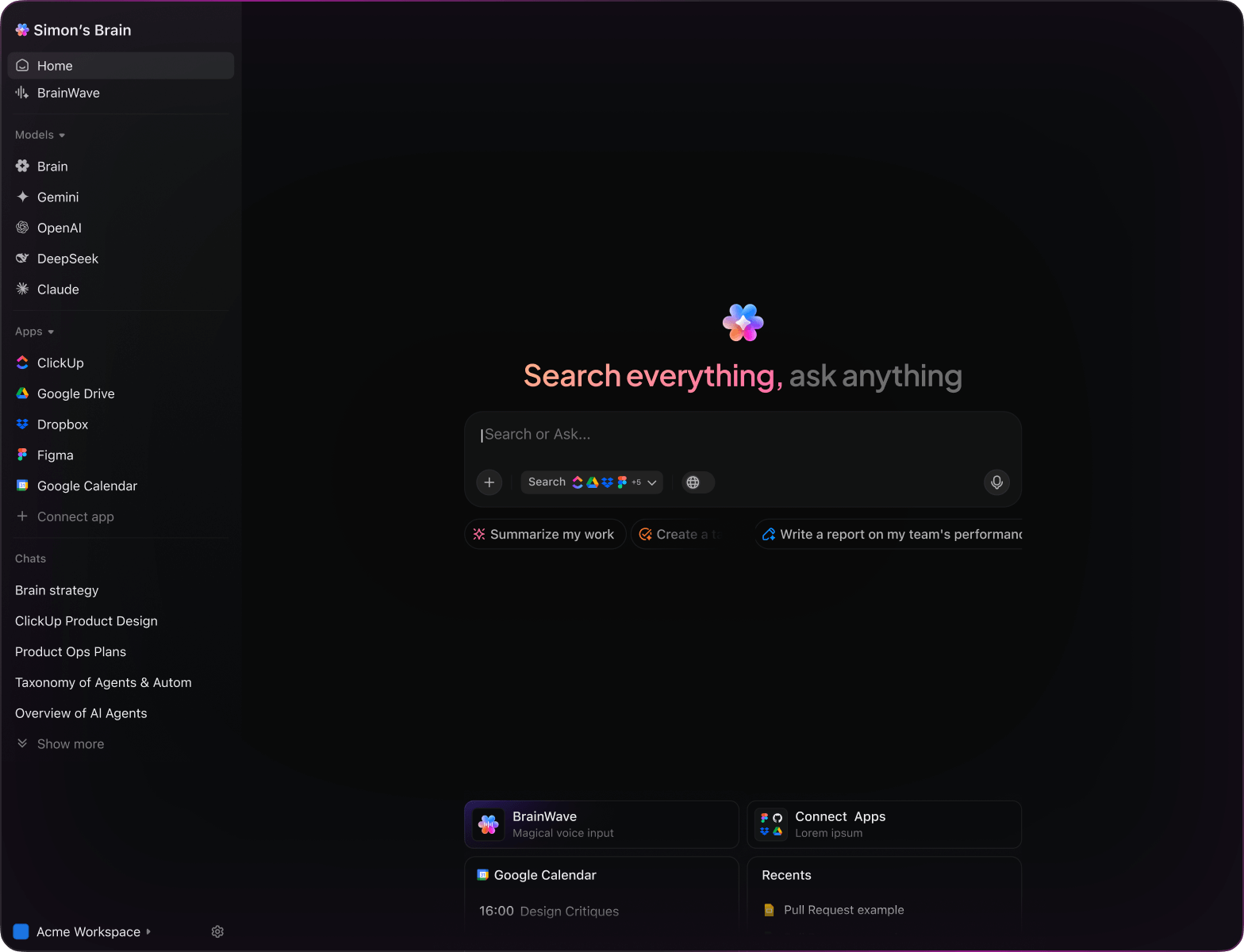AI-Driven Scientific Discovery
Top AI Prompts for Scientific Research
Accelerate your experiments, organize complex data, and enhance collaboration with ClickUp Brain tailored for researchers.
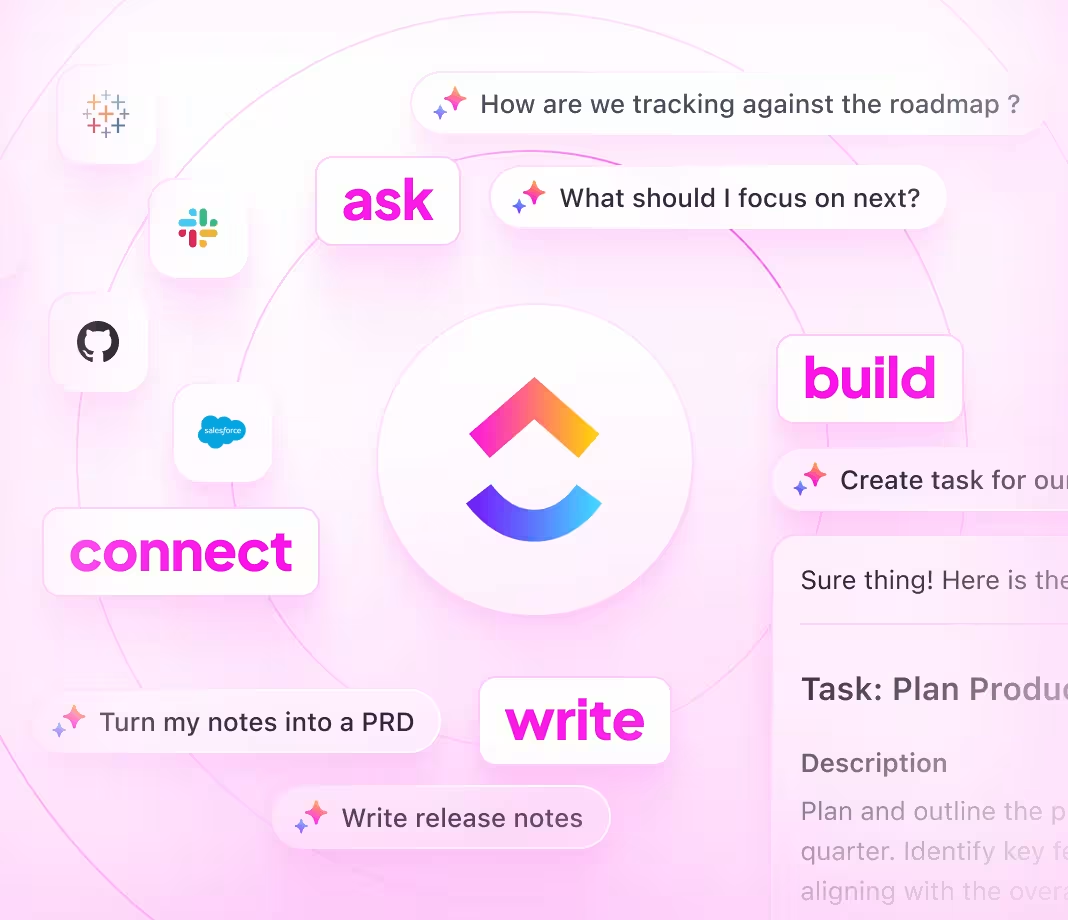
Trusted by the world’s leading businesses
AI in Scientific Research
How AI Prompts Revolutionize Scientific Research Processes
Advancing scientific discovery isn’t only about experiments—it’s about managing vast data, hypotheses, and collaboration.
From initial literature reviews to experimental design, data analysis, and publication planning, research workflows involve numerous complex steps—and countless files, notes, and deadlines. AI prompts are now critical to navigating this complexity.
Researchers leverage AI to:
- Quickly identify relevant studies and emerging trends
- Generate detailed experiment protocols and data summaries
- Interpret dense scientific texts and extract key insights
- Transform scattered observations into clear reports, task lists, or project milestones
Integrated within familiar tools—such as documents, collaborative boards, and project trackers—AI in platforms like ClickUp Brain acts as a proactive partner, converting raw ideas into structured, manageable research activities.
Comparing ClickUp Brain with Conventional AI
Why ClickUp Brain Stands Out in Research
ClickUp Brain integrates seamlessly, understands your context, and empowers you to focus on discovery instead of setup.
Standard AI Solutions
- Constantly switching apps to collect information
- Repeating your research objectives with each query
- Receiving generic, irrelevant feedback
- Hunting through numerous platforms for a single document
- Interacting with AI that only processes input without insight
- Manually toggling between different AI engines
- Merely a browser add-on without deep integration
ClickUp Brain
- Deeply connected to your projects, papers, and collaborator notes
- Retains your research progress and aims
- Provides detailed, context-aware guidance
- Offers consolidated search across all your resources
- Supports voice commands through Talk to Text
- Automatically selects the optimal AI model: GPT, Claude, Gemini
- Dedicated desktop app for Mac & Windows optimized for performance
Prompts for Scientific Research
15 Essential AI Prompts for Scientific Research Teams
Enhance research workflows—data analysis, hypothesis generation, and documentation simplified.

Identify 5 innovative experimental approaches for studying gene expression in plant cells, based on the ‘Gene Expression 2025’ report.
ClickUp Brain Behaviour: Analyzes linked documents to extract key methodologies and propose novel research angles.

What are the current trends in neuroimaging techniques for cognitive studies under $50K budget?
ClickUp Brain Behavior: Integrates insights from internal research summaries; Brain Max can supplement with relevant external publications if accessible.

Draft a research proposal outline for investigating microbial resistance, referencing Lab Notes #12 and previous project summaries.
ClickUp Brain Behavior: Pulls pertinent information from attached files to construct a structured and comprehensive proposal framework.

Compare statistical analysis methods used in recent cancer genomics studies from the ‘Genomics Q2’ dataset.
ClickUp Brain Behavior: Extracts and summarizes quantitative data and methodological descriptions from internal reports.

List primary reagents and materials commonly used in CRISPR-Cas9 experiments, citing lab protocols and supplier catalogs.
ClickUp Brain Behavior: Surveys internal documentation to compile a detailed inventory with performance notes.

From the ‘Clinical Trial Validation’ document, generate a checklist for protocol adherence and data integrity.
ClickUp Brain Behavior: Identifies critical checkpoints and formats them into a clear, actionable task list.

Summarize 3 emerging data visualization techniques in bioinformatics from recent conference proceedings and research papers.
ClickUp Brain Behavior: Extracts recurring themes and innovative practices from linked scholarly materials.

From the ‘Postdoc Survey 2024’ document, summarize key preferences regarding collaborative tools and data sharing.
ClickUp Brain Behavior: Analyzes survey data to highlight common needs and suggestions among research teams.

Compose concise and engaging abstract text for a paper on climate change impact using the style guide in ‘ResearchTone.pdf’.
ClickUp Brain Behavior: Adapts tone and style from the guide to generate multiple abstract drafts for review.

Summarize recent updates in ethical guidelines for human subject research and their implications for our study designs.
ClickUp Brain Behavior: Reviews linked compliance documents and highlights key changes affecting protocol development.

Generate formatting and citation guidelines for manuscripts targeting journals in molecular biology, referencing publisher standards.
ClickUp Brain Behavior: Extracts formatting rules and compiles a checklist to ensure compliance with submission requirements.

Create a risk assessment checklist for laboratory safety based on OSHA 2025 standards and our internal safety protocols.
ClickUp Brain Behavior: Identifies hazards and safety measures from documents and organizes them into a practical checklist.

Compare data management practices across leading research institutions using our competitive analysis reports.
ClickUp Brain Behavior: Summarizes documented strategies into an easy-to-digest overview with key differentiators.

What are the latest trends in AI-assisted drug discovery since 2023?
ClickUp Brain Behavior: Synthesizes insights from recent publications, internal research notes, and technology reviews.

Summarize primary challenges in field data collection for ecological studies in Southeast Asia, including equipment and methodology issues.
ClickUp Brain Behavior: Extracts and prioritizes reported obstacles from survey data, field reports, and feedback logs.
Accelerate Scientific Discovery with ClickUp Brain
Cut down on repetitive tasks, unify your research team, and produce higher-quality results using AI-driven workflows.





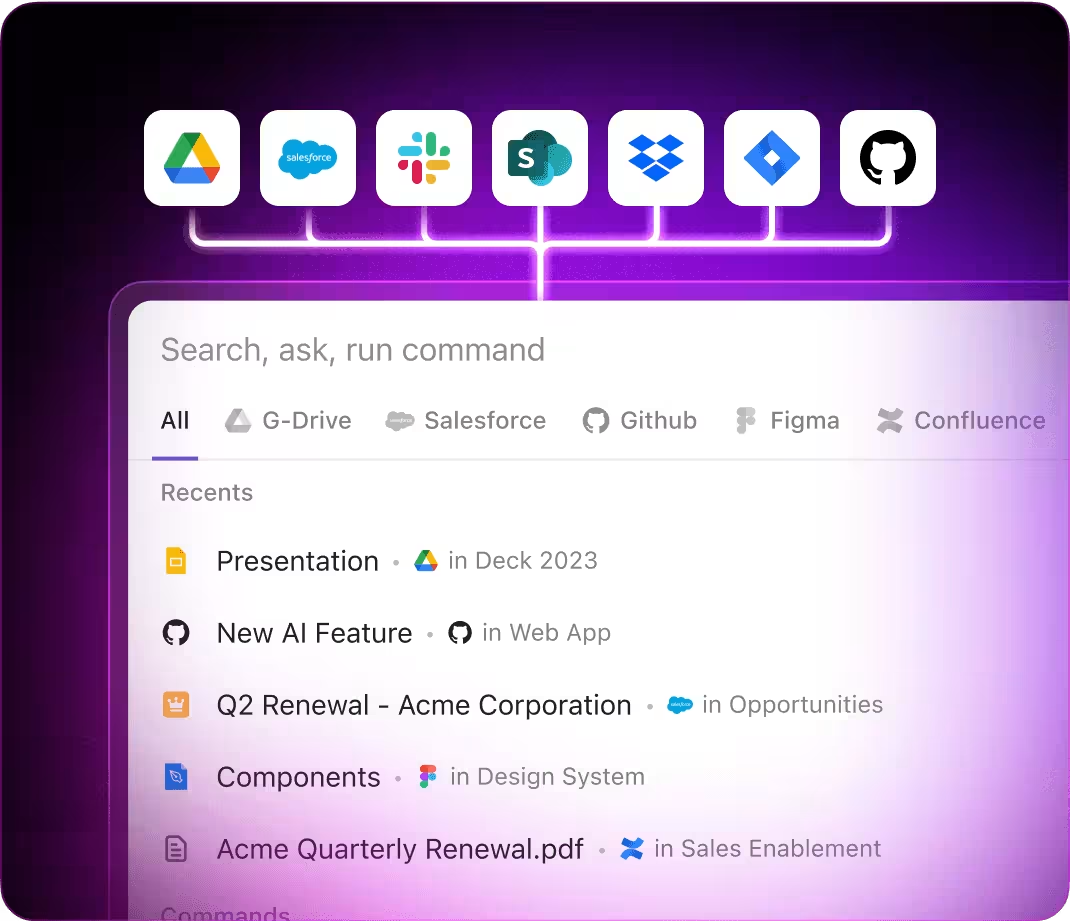
Harnessing ClickUp Brain for Scientific Research Insights
Discover How ChatGPT, Gemini, Perplexity, and ClickUp Brain Enhance Research Workflows
ChatGPT Research Prompts
- Outline a 5-point summary of recent gene editing experiments focusing on CRISPR advancements.
- Compose an abstract for a paper on renewable energy storage emphasizing novel battery materials.
- Propose 3 hypotheses for climate change impact on marine biodiversity with supporting rationale.
- Draft a detailed protocol for synthesizing a new pharmaceutical compound.
- Compare findings from last 3 clinical trials and highlight key patient outcome metrics for review.
Gemini Research Prompts
- Develop 3 experimental designs for testing enzyme activity under varying pH conditions.
- List innovative microscopy techniques suitable for live cell imaging with pros and cons.
- Create a conceptual framework describing neural network models applied to genomics.
- Suggest optimal sample preparation methods for proteomics studies and rank by efficiency.
- Generate a comparative table of recent cancer biomarker studies focusing on sensitivity and specificity.
Perplexity Research Queries
- Identify 5 emerging materials for biodegradable plastics and evaluate environmental impact.
- Summarize advancements in quantum computing algorithms relevant to molecular simulations.
- Review global trends in vaccine development and their adoption in public health policies.
- List 5 novel data visualization tools for large-scale genomic datasets and assess usability.
- Analyze previous research on antibiotic resistance and extract top 3 strategies for mitigation.
ClickUp Brain Research Prompts
- Transform this lab meeting transcript into prioritized research tasks with assigned team members.
- Extract key findings from experimental logs and generate follow-up action items with deadlines.
- Review annotated microscope images and compile a checklist for further analysis and validation.
- Create a project timeline from interdisciplinary discussions on gene therapy trials including milestones.
- Summarize participant feedback from clinical studies and produce actionable tasks for protocol refinement in ClickUp.
Why Choose ClickUp
Transform Early Thoughts into Clear Research Plans
- Convert scattered observations into detailed study outlines swiftly.
- Generate innovative hypotheses by analyzing previous experiments.
- Build standardized protocols that accelerate every research cycle.
Brain Max Boost: Quickly access prior data, peer reviews, and lab notes to fuel your upcoming investigations.
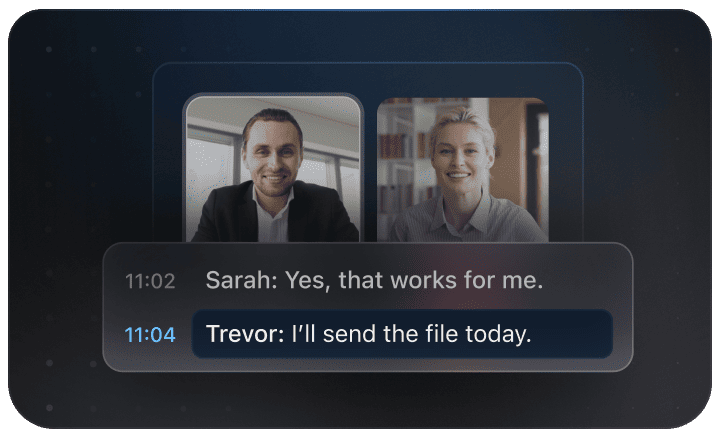
Why Choose ClickUp
Accelerate Research Collaboration and Data Sharing
- Break down intricate research debates into straightforward, trackable tasks.
- Transform experimental observations into actionable assignments effortlessly.
- Automatically compile study summaries and progress reports without lifting a finger.
Brain Max Boost: Instantly access historical experiment results, literature comparisons, or protocol notes across all projects.
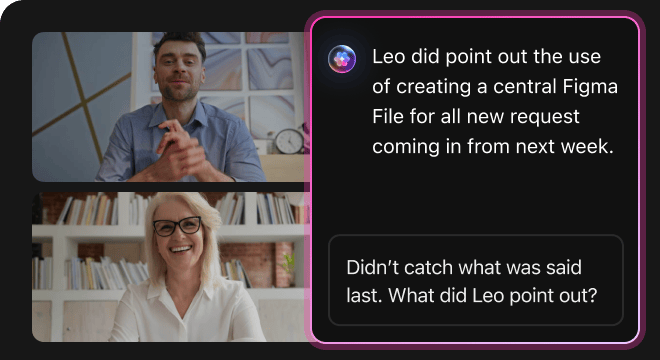
AI Advantages
Harness AI Prompts to Elevate Scientific Research
AI prompts accelerate discovery and empower innovative scientific breakthroughs.
Instantly Develop Research Hypotheses
Researchers explore novel ideas rapidly, refine experimental approaches, and overcome analysis bottlenecks.
Enhance Data-Driven Insights
Make informed interpretations, minimize errors, and produce findings that resonate with peers and funding bodies.
Identify Flaws Early in Experiments
Detect potential issues before costly repetitions, improve data integrity, and shorten study timelines.
Align Teams Across Disciplines
Facilitates clear communication, reduces misunderstandings, and accelerates consensus among scientists and collaborators.
Drive Cutting-Edge Discoveries
Inspire breakthrough hypotheses, foster innovative methodologies, and maintain leadership in your field.
Integrated AI Support Within ClickUp
Transforms AI-generated insights into actionable research tasks and project milestones seamlessly.
Boost Your Scientific Research Workflow
Minimize mistakes, enhance collaboration, and generate insightful results with AI-powered support.





